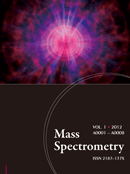10 巻, 1 号
選択された号の論文の8件中1~8を表示しています
- |<
- <
- 1
- >
- >|
Review
-
2021 年 10 巻 1 号 p. A0095
発行日: 2021/06/30
公開日: 2021/06/30
[早期公開] 公開日: 2021/04/24PDF形式でダウンロード (11390K) HTML形式で全画面表示
Original Article
-
 2021 年 10 巻 1 号 p. A0093
2021 年 10 巻 1 号 p. A0093
発行日: 2021/01/30
公開日: 2021/01/30
[早期公開] 公開日: 2020/12/11 -
2021 年 10 巻 1 号 p. A0094
発行日: 2021/03/13
公開日: 2021/03/13
[早期公開] 公開日: 2021/01/22PDF形式でダウンロード (14550K) HTML形式で全画面表示 -
2021 年 10 巻 1 号 p. A0096
発行日: 2021/06/10
公開日: 2021/06/10
[早期公開] 公開日: 2021/04/28PDF形式でダウンロード (460K) HTML形式で全画面表示 -
2021 年 10 巻 1 号 p. A0097
発行日: 2021/09/07
公開日: 2021/09/07
[早期公開] 公開日: 2021/07/20PDF形式でダウンロード (471K) HTML形式で全画面表示 -
2021 年 10 巻 1 号 p. A0099
発行日: 2021/12/23
公開日: 2021/12/23
[早期公開] 公開日: 2021/10/30PDF形式でダウンロード (996K) HTML形式で全画面表示 -
 2021 年 10 巻 1 号 p. A0100
2021 年 10 巻 1 号 p. A0100
発行日: 2021/12/25
公開日: 2021/12/25
[早期公開] 公開日: 2021/12/03
Technical Report
-
2021 年 10 巻 1 号 p. A0098
発行日: 2021/10/14
公開日: 2021/10/14
[早期公開] 公開日: 2021/09/06PDF形式でダウンロード (856K) HTML形式で全画面表示
- |<
- <
- 1
- >
- >|
